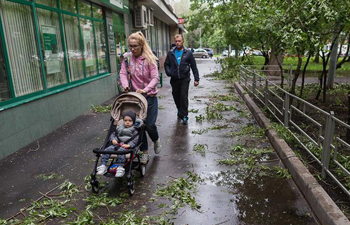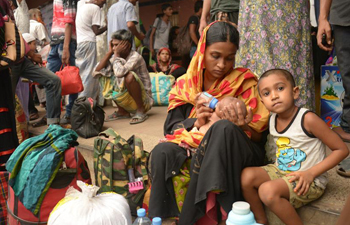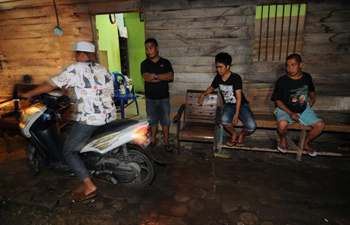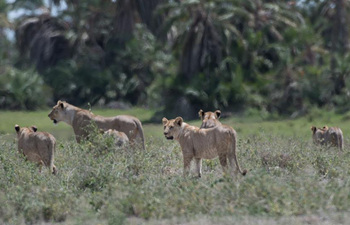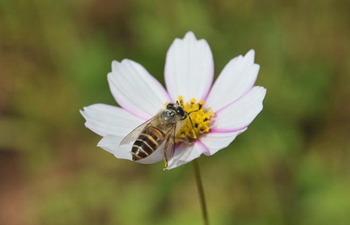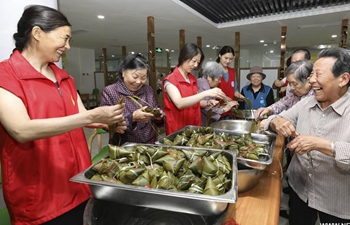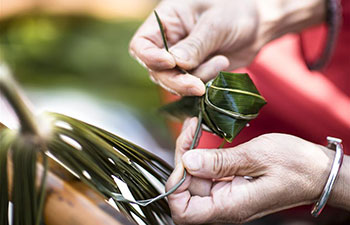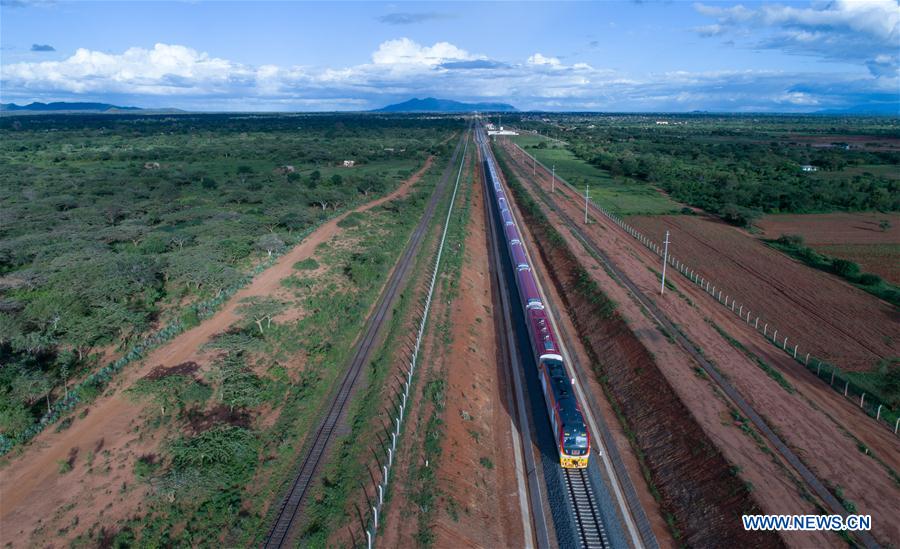
A train carries out a test run on Kenya's Mombasa-Nairobi Standard Gauge Railway (SGR) on May 24, 2017. (Xinhua/Chen Cheng)
By Bedah Mengo and Wang Xiaopeng
NAIROBI, May 29 (Xinhua) -- The first two parts of "My Railway, My Story," a three-part documentary produced by Xinhua News Agency on the Standard Gauge Railway (SGR) linking Nairobi to the port city of Mombasa was debuted on a Kenyan broadcaster on Sunday and Monday respectively, with favorable reviews.
The major public broadcaster KBC in the East African nation of Kenya showed the two parts, "Bridges," and "Stations," which revolve around the 79 bridges and 33 stations along the 480-kilometer-long railway respectively, with stories of people dedicated to its construction, during its prime time.
Kenyan observers on Monday lauded the initial two parts of the documentary, which will be 90 minutes long in total.
Stephen Ndegwa, a communication consultant and public policy analyst, noted that the film, "My Railway, My Story" aired Sunday showcased marvelous Chinese artwork in the construction of SGR.
"The documentary is an invaluable record captured at a momentous occasion when Kenya makes another milestone in national development," he said.
"The legacy of this line lives on. In the same case, SGR will inform the country's socio-economic discourse for many years to come, and this is well captured in the documentary."
Henry Wandera, an economics lecturer in Nairobi, believed the documentary was not only informative but also educative on many aspects of the project, after he watched the first part.
"It offers a glimpse of the standard gauge railway and its impact in Kenya. Close to five year's work is frozen in just 30 minutes as one travels from the Kenya to China and back as he interacts with professionals from the two countries."
Through it, he noted that Kenyans were able to learn the impact of the project on the lives of citizens, in particular the female engineers.
"Watching it, one realizes that the SGR is building a new crop of young female professionals in a fashion never seen before. Engineering was a male dominated field but I could not believe seeing a young, beautiful woman operating an earthmover just like a toy. This is a kind of story you do not see in Kenyan media, but this documentary has brought it forth," he said.
In addition to showing the life changing impact of the railway, the documentary further explained the value of the project to Kenya and its neighboring countries, Wandera said.
Many observers noted through the documentary that the railway, a flagship project of China-Kenya practical cooperation, embraces the design of wildlife corridors.
Through the documentary, Kenyans can see that the Chinese have ensured that they build high bridges and fence off sensitive areas to avoid conflicts with human beings and wildlife, Denise Kodhe, the Director General of the Institute for Democracy and Leadership in Africa (IDEA), said.
People in broadcasting services said they can not wait for the last part of the documentary, which is due to be aired in June, after the completion of the modern railway project on Wednesday, calling it a masterpiece.
The influence of the documentary went beyond Kenya, since it was also shown on social network services like Facebook and Twitter, and YouTube, after its premiere on KBC.
Just hours after the release of the first part online, at least 800,000 Internet users on these platforms had watched it, with more than 7,000 "likes" and 1,000 retweets. More than 500 of them commented on the documentary, praising China's efforts in helping other developing countries through infrastructure.
"China is truly transforming Africa," an Internet user named Robin Chetter wrote.




